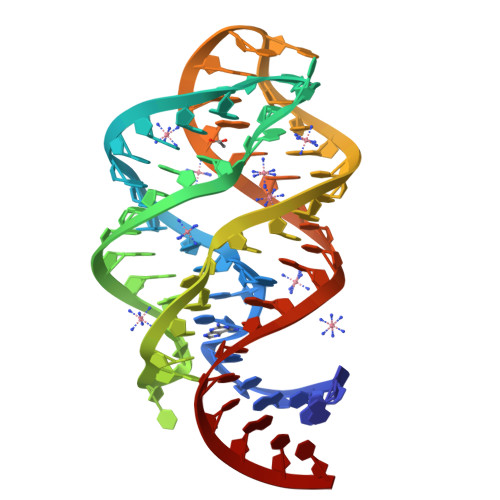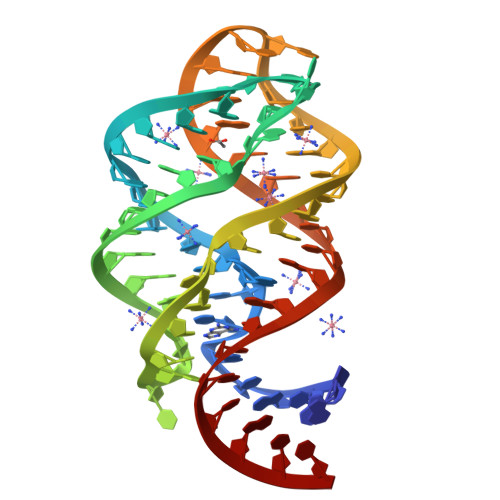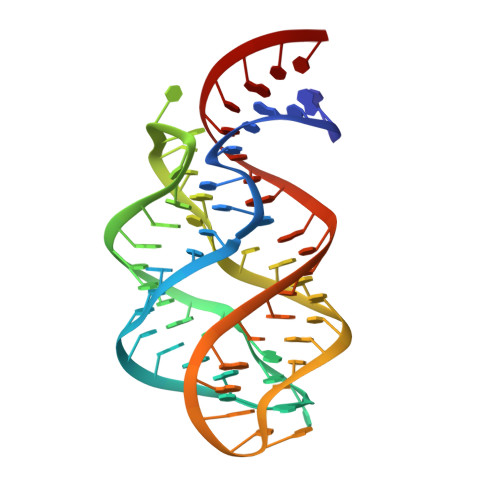Thermodynamic and kinetic characterization of ligand binding to the purine riboswitch aptamer domain.
Gilbert, S.D., Stoddard, C.D., Wise, S.J., Batey, R.T.(2006) J Mol Biology 359: 754-768
- PubMed: 16650860
- DOI: https://doi.org/10.1016/j.jmb.2006.04.003
- Primary Citation of Related Structures:
2B57 - PubMed Abstract:
Riboswitches are cis-acting genetic regulatory elements found commonly in bacterial mRNAs that consist of a metabolite-responsive aptamer domain coupled to a regulatory switch. Purine riboswitches respond to intracellular concentrations of either adenine or guanine/hypoxanthine to control gene expression. The aptamer domain of the purine riboswitch contains a pyrimidine residue (Y74) that forms a Watson-Crick base-pairing interaction with the bound purine nucleobase ligand that discriminates between adenine and guanine. We sought to understand the structural basis of this specificity and the mechanism of ligand recognition by the purine riboswitch. Here, we present the 2,6-diaminopurine-bound structure of a C74U mutant of the xpt-pbuX guanine riboswitch, along with a detailed thermodynamic and kinetic analysis of nucleobase recognition by both the native and mutant riboswitches. These studies demonstrate clearly that the pyrimidine at position 74 is the sole determinant of purine riboswitch specificity. In addition, the mutant riboswitch binds adenine and adenine derivatives well compared with the guanine-responsive riboswitch. Under our experimental conditions, 2,6-diaminopurine binds the RNA with DeltaH=-40.3 kcal mol(-1), DeltaS=-97.6 cal mol(-1)K(-1), and DeltaG=-10.73 kcal mol(-1). A kinetic determination of the slow rate (0.15 x 10(5)M(-1)s(-1) and 2.1 x 10(5)mM(-1)s(-1) for 2-aminopurine binding the adenine-responsive mutant riboswitch and 7-deazaguanine-binding guanine riboswitch, respectively) of association under varying experimental conditions allowed us to propose a mechanism for ligand recognition by the purine riboswitch. A conformationally dynamic unliganded state for the binding pocket is stabilized first by the Watson-Crick base pairing between the ligand and Y74, and by the subsequent ordering of the J2/3 loop, enclosing the ligand within the three-way junction.
Organizational Affiliation:
Department of Chemistry and Biochemistry, University of Colorado, Boulder, Boulder, CO 80309, USA.



















